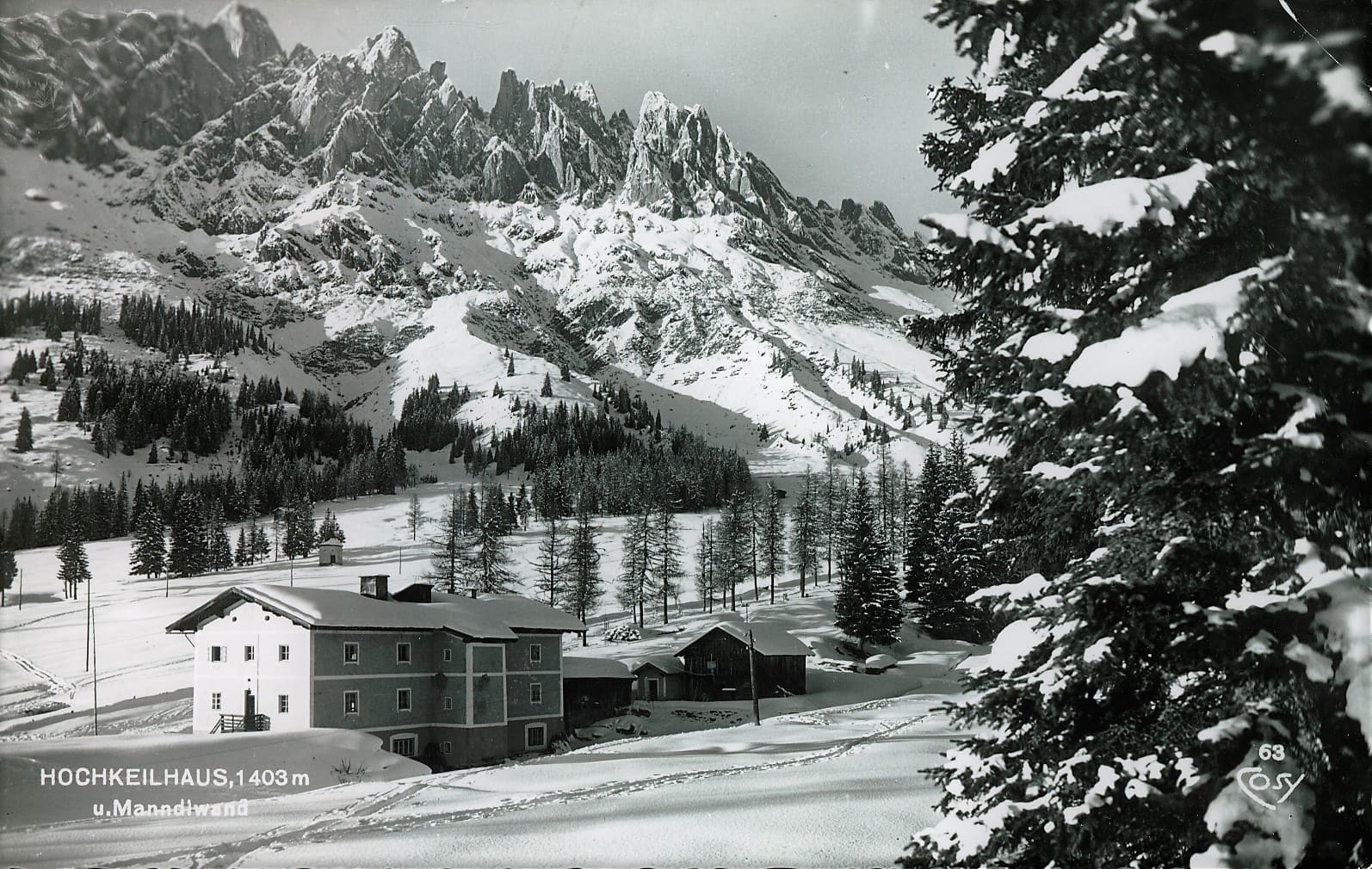Powder Tower Griesfeld - Hochkeil Lodge
Opposite the "Kreuzbergmaad“ is the
"Pulverturm“ (Powder Tower). In 1854,
a brick hexagonal tower was built in the
Griesfeld, which was converted into the
Maria-Hilf Chapel around 1939 by Sepp
and Mädi Kreuzberger. Many couples have
exchanged their vows in this chapel, and
baptisms have also taken place.
To combat the prevalent miner‘s disease
scurvy, which results from a vitamin
deficiency, vitamin-rich food had to be
procured. In the 1870s, the Griesfeld,
strewn with countless stones, was
purchased by the copper mining company
and painstakingly cleared by the miners.
Then, stone walls were built with the
debris - approximately 8 km long. This
effort resulted in lush alpine meadows for
livestock farming and dairy production,
following the example of the Allgäu
region.
Just below stands the "Hochkeilhaus.“
Built in 1857 as the "Josefi Berghaus,“ it
served as the accommodation for the
miners who toiled in the tunnels of the
Mitterberg. The ground floor housed a
large room with long stoves and multiple
hearths. In this communal kitchen, each
miner had his "Koststock,“ a wooden chest
with a lid and lock to store his food. The
upper floors served as sleeping quarters
with hatches to the kitchen, providing
them with heat. Since 1984, it has been
used as a youth hostel by the Radacher
family.
Kids
Schiachpercht
I come every year in January, during the Rauhnächte, when it's bitterly cold. I have thick fur, long horns and a grim look. You can hear my bells from afar and I walk through the villages in Pongau with my dark companions on the Perchtenlauf. I visit people every year during the coldest and darkest time of the year. Some children are frightened by me, they run away or some are very brave and shake my hand. I have a rod with me, but I won't hurt you, I just look so grim that winter gets scared of me.
I am the Schiachpercht ("schiach" = ugly) and I have come to drive out the winter. The cold and darkness shall give way and spring shall come soon. With me come the witches, the Habergoas and also the Schönperchten. We only appear once a year until we are needed again next year to drive out the winter.
Schiachpercht - Schönpercht
In winter around the turn of the year, the Schön- and Schiachperten ("schiach" = ugly) come to Pongau. The Schiachperchten, with their loud bells and ugly larvae ("masks"), drive away the winter every year anew. The Schönperchten, with their beautifully decorated caps, bring many good wishes, blessings and fertility for the New Year. The Perchten are also joined by witches, who wear masks, dresses and cardigans and do their mischief at the Perchtenlauf. They throw flour and sawdust around and sweep out the old year with their brooms. In addition to the Perchten and witches, there are many other figures who take part in the Perchtenlauf. For example, there are the Habergeiss, the bears, the Waldmandl and the hunter and many other figures that visit the people of Pongau once a year.
The Perchtenlauf, a long tradition in Pongau
"An Fried, an Reim und an Gsund", in other words peace, happiness and health, is what the Schönperchten wish every year at the Perchtenlauf. This spectacle takes place around the Rauhnächten, on the days before and after the turn of the year. In Pongau, the big Perchtenlauf has been taking place every year since 1957, alternating between the communities of Bischofshofen, Altenmarkt, Bad Gastein and St. Johann im Pongau. A large number of Schön- and Schiachperchten, witches with their brooms and other figures run through the villages, driving away winter and the evil spirits of the dark season. They bring good wishes for the New Year.
The Schönperchten do not wear masks or "larvae", as they are called here, but caps with a long tradition. These are often several metres high and finely crafted headgear weighing up to 40 kg. They are often passed down in families and beautifully decorated. At the command of the Perchten chief, the beautiful Perchten bow to the visitors and wish them blessings, luck and fertility for the New Year. According to tradition, only men are allowed to take part in the Perchten run; women are only allowed to take part in the brass bands. The Perchten tradition dates back to the 17th century and was first documented in 1867.




